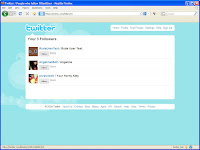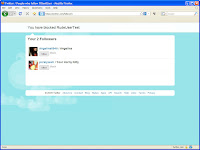Everyone has to have a working PC these days to get their jobs done and buying new computers for the office can get quite expensive. When you add to that all the upgrades they’ll need and the support costs when they start to fail, you might wonder if it’s all worth it.
The answer is, of course, you can’t do without the computers when you’re in business, but you can plan for those costs and upgrades so you have the least expense and it is predictable. On top of that, the following lifecycle plan will keep your support costs to a minimum so you’ll have far fewer unexpected expenses when these PCs “get old”.
The problems with ad hoc purchasesMany businesses buy new PCs and laptops as they need them. On the surface, that sounds appropriate; you’re only spending when you have to. However, there are a number of problems caused by this casual, unplanned method:
Unexpected expendituresWhen you just go out and buy a new laptop because an existing one was damaged or you buy a new PC just because it wasn’t speedy enough to run the new version of MS Excel the new client requires, you are making unplanned expenditures. For most of us, especially in these tight times, making a large unplanned expenditure can be painful.
The worst case, of course is when you need to buy a new computer for real business needs, but choose not to because cash is too tight. That’s a terrible position to be in and one that can be avoided.
Unnecessary featuresAn insidious but costly result of ad hoc purchases is you will likely buy more features than you really need. If you suddenly need a replacement PC for the bookkeeper, you will likely go out to the store, look at prices, and choose a computer with the most features for the cheapest price. Later, when you look back you’ll likely find you bought more features than you needed.
Ever discover your HR person’s PC had a wireless mouse or keyboard that broke even though they’re never more than 2 feet from the PC? Or you bought a laptop for the salesguy with a subwoofer and a broadband card that you never paid to turn on? These are common examples of buying computers at the last minute without planning what you need and looking for matching computers.
Different brands and modelsThis is one you’re probably dealing with already, but haven’t realized it’s costing you money. Take a look around the office. What brands of computers do you see? Which models? Are they (mostly) all the same? If you answered “yes” then great, you’re already on your way. For the vast majority of businesses, the answer is “no” because they have twenty different kinds and models of PCs because there was no strategy for buying them.
By planning ahead and sticking to a strategy for buying PCs, you will end up with just one brand (like Dell, IBM or HP) and just one or two models within that brand. By buying all the same PC, you greatly reduce the support costs you have and the little hen-pecking of training differences each person goes through as they try to use a different model than last time and a wholly different brand than their co-worker uses.
These extra, almost-hidden costs really show up when something goes wrong and no one in the office has ever had that kind of problem on their computer so you can’t fix the issue with local knowledge. Now you have to go to a squad of geeks or the vendor and really lose time and money.
Lumpy purchasingThe worst issue with ad hoc purchasing is, of course, lumpy expenditures. When you wait until you can’t stand it any more and upgrade all the PCs at one time, you incur a huge cost in one year that you won’t see again until three or more years later… and, again, it’ll be an unplanned, large expenditure. By the very nature of the size and pain, you’ll put those off as long as possible and probably incur support and ad hoc costs again….
Instead of this lumpy, all-at-once buying, a good computer purchasing strategy sets a cycle of buying computers, say once every three years, that spreads these costs over those three years and keeps everything smooth and predictable.
Out-of-step with othersOne last issue that you’ll likely recognize is the cascading upgrade. When you do have to buy one new PC and it happens to come with a new version of Windows or MS Office, you often find that one person is producing files that no one else can use. They’ve upgraded software as a result of getting a new PC, but no one else has. Suddenly your office has a mix of old and new file versions, no one can manage it well, and you often end up upgrading everyone’s software. Just because you bought one new PC.
A better way of buying computers for businessI’ve been working with large and small business I.T. departments for decades and the companies who really have a strategy for computers always seems to have the happiest, most-productive workers and who spend the least money overall. Here’s what they do:
3 year lifecycle for PCsBuy desktop computers and laptops with an expectation to use them for just three years.
Replace one third of all your desktop and laptop computers each year.
This smooths out the costs, allows predictable expenditures, and guarantees each employee will get a new computer as the three-year-old computer reaches its end-of-reliable life.
One brand, a few modelsChoose one reputable, national brand like Dell, IBM or HP and stick to just them. Call in to their small business sales department and establish a relationship. You’ll get better pricing and special deals. If you want a local firm that can provide national brands and still get great support, try
GroundForce IT.
Pick one or two models, perhaps an one entry level and one more-powerful configuration, and always buy that one. You’ll satisfy the real needs of employees and keep the number of different computers and configurations to a minimum.
When you stick to just one brand and just a few models, your support and training costs go down and, if you’re like me, an unplanned emergency trip to the local computer store will not result in a paid-too-much for features-you-don’t-need scenario.
Always use manufacturer supportWhen you buy these business-class computers from a national brand, you definitely want the next-business-day on-your-site support contract for the three years you plan to keep the computers.
This cheap warranty means that when anything goes wrong with the hardware, you call in and can expect the machine to be repaired the very next day without having to box up and mail the crashed machine. You’ll save plenty of downtime and gain the reassurance that any problem will be fixed the next day.
National brand, local supportOne more reason to only buy from known, national brands is to guarantee you’ll get service in your local area. You can certainly find lower-priced computers from off-brand vendors or local computer shops, but they don’t have hordes of computer repair people and are not a likely to remain in business as Dell, IBM or HP.
Standard applicationsWhen you load up one of these PCs with the applications your employees need, be sure to stick to just a small number of intentionally-selected applications. Perhaps MS Office or
OpenOffice and the
Thunderbird email client. Only you know which applications are right for you, but once you’ve decided be sure to stick to the standards.
When you let employees just use whatever software they want to, you risk the PCs getting cluttered with many different apps that each require their own support and reduce your office’s ability to provide collaborative internal support because everyone uses the same software.
You definitely want to use all the same anti-virus, SPAM and web browsing security software. If you have more than 5 PCs, you’ll want a corporate edition or buy these utilities, as a managed service, from a reseller like
Sklar Technology.
Imaging their computers
Once the PCs are delivered and you’ve got all the standard apps installed and the corporate stand for security software loaded, you want to “make an image” of this pristine machine before you give it to the users.
By running software like
Norton’s Ghost, you can make a new install DVD that brings a blank PC (of the same model) up to the exact same set of OS and apps that you have right now. This means you can reload the PC in just five minutes should it become to clogged with software, catch a nasty virus, or even just load a brand-new same-model PC.
One step further: the ultimate strategyWhat we’ve covered above is applicable to almost all small businesses, from two computers to a hundred. When you’ve got your basic costs controlled with this kind of strategy, you can implement a few more steps to get the most of your computers and I.T. without having to hire an I.T. department:
Managed PCs
Once you get past twenty computers, it’s almost a fulltime task keeping all the patches up to date and answering user questions about this program or that driver. You’ll certainly want to have a file server and a good backup solution. That sounds like you’re ready to hire an expensive I.T. person. Don’t.
When you need a particular kind of skill or service to do something for your business, but not to resell to your customers, you call that “not core competency” and intelligently outsource that service. Like payroll or benefits or fleet maintenance.
Unless you have hundreds of PCs, you would find better success and lower costs if you used a managed (PC) service provider (MSP) like
TheHelpDeskCompany to keep your PCs running well and all your application questions answered by responsive, knowledgeable people.
Centralized securityWhen you get to a couple of dozen PCs, you’ll also be confronted with PC viruses and SPAM and maybe even a hacker every once in a while. Instead of trying to keep up to date on all the crazy security breaches in the world, you should leave that work up to people who do it every day.
A company that controls the anti-virus and security software on each of your PCs remotely is commonly called centralized or managed security. Sklar is a local Richmond example of a reputable, responsive firm offering this service and they have many success stories where they’ve saved a customer in just these circumstances.
Online backup
Get too far a few computers in the office and you’ll discover you need a backup strategy, too. Someone will erase something from the file server or a spilled coffee will destroy and entire hard drive full of client information that isn’t copied anywhere else.
In the old days, two years ago, you would buy a server and install a tape drive and tell the receptionist to switch the tapes each night and carry one home. Luckily there is an easier, less expensive way that guarantees you’ll never lose a file.
Many companies offer online backups which means your PCs and laptops back up their own files, but instead of writing to tape or CD, they send those backups to a secure website run by companies like Dell, Microsoft or Sklar. These backups happen all the time, they go fast when there is a high speed Internet connection, and you recover quickly when your laptop is stolen or your PC is fried by lightning.
Office printersThis last one is a pet peeve of mine. Computer printer manufacturers are making a killing these days by convincing users that everyone should have their own printer and it should be a color printer and it is cheap. When you see ads for a $80 personal color inkjet or a $200 color laser, your first thought is probably “what a deal!”
Sadly, this is not a good deal. Every time you add another printer to the office, you are adding more maintenance and support costs. Every time you buy an “inexpensive printer”, you are falling for the manufacturer’s trap of cheap printer expensive ink cartridges. If you don’t have a plan, a strategy for buying printers, you’ll likely end up with an office full of incompatible printers, each with their own drivers, each with their own set of supplies and no real way to control the expenses.
A better, cheaper, more productive plan for office printers would be to select one or two kinds of printers, locate them centrally so everyone or each group can easily reach the printers, and standardize on those printers. Choose printers that have the features you need (like color if you really need it and duplexing only if that makes sense for the majority of your printing needs) and whose toner and ink cartridges are high capacity, low cost and have 3rd party sources. That will reduce your support costs as well as your supply costs and stocking levels.
Conclusion
You can save a lot of money and heartburn by adopting a plan, a strategy for buying desktop and laptop computers. You can put ad hoc purchases behind you with a careful, measured implementation of strategy. If you really want to save money, you could apply the same technique to office printers.










